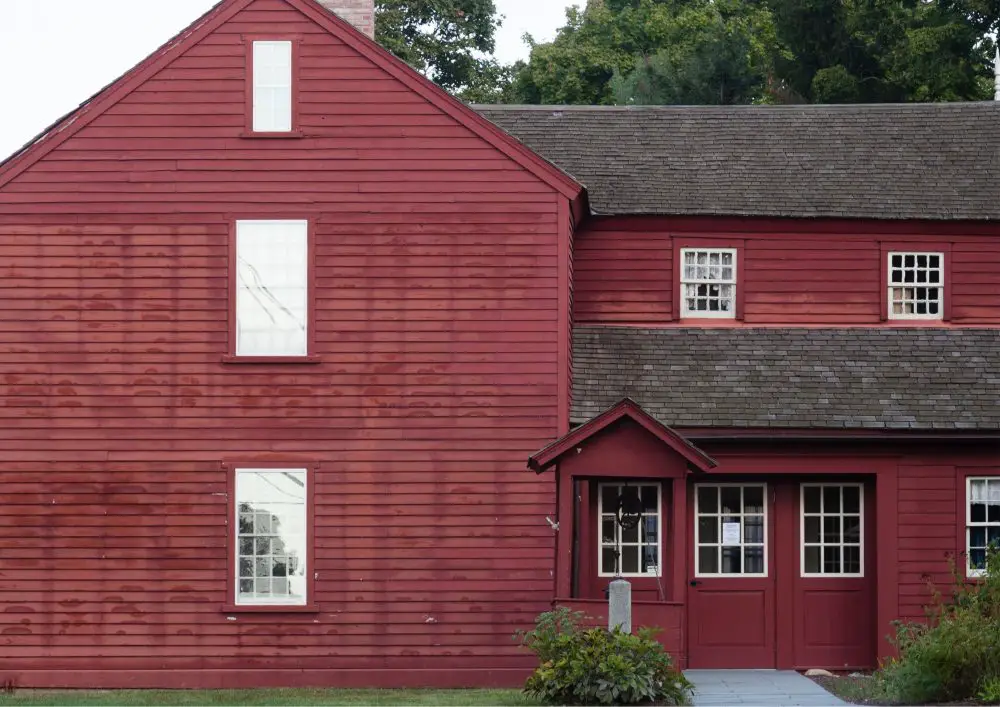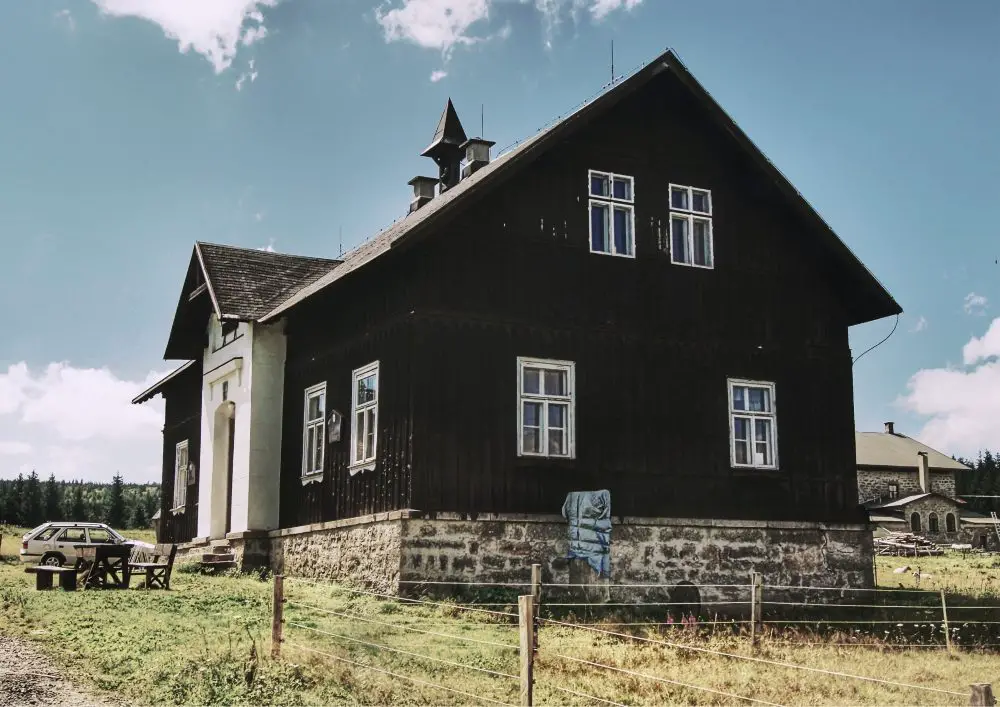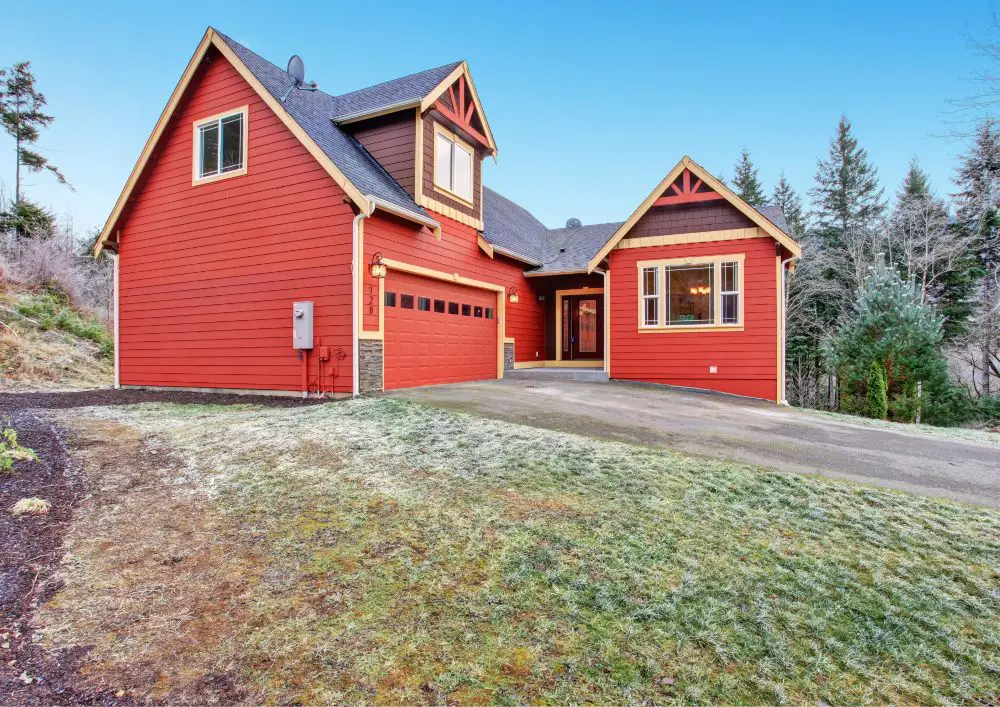Barndominiums pique the curiosity of visitors by perfectly combining the timeless attraction of ancient beauty with the demands of modern existence. The combination of historical charm with cutting-edge design components results in a dwelling concept that is both physically appealing and functionally avant-garde.
The word “barndominium” introduces a housing trend that goes beyond the banal, attracting individuals looking for houses that capture the soul of both the past and the present.
Today’s homeowners aspire to dwell in residences that transcend mere functionality, and barndominiums provide the stage for such aspirations to unfold into unique, character-filled living spaces.
This article navigates the transformative journey of converting barns into distinctive homes to unravel the captivating essence of “barndominium living”.
Contents
Decoding the Barndominium Aesthetic
Barndominiums represent a departure from traditional housing, preserving the historical charm of barns while introducing modern design elements.
The barndominium concept captures attention by reinventing what a home may be, fusing the contemporary and the rustic in a beautiful dance of form and function. This is evident in both the meticulously chosen interiors and the worn exteriors.
Open-Concept Spatial Dynamics
One of the fundamental aspects of the Barndominium aesthetic is its commitment to open-concept spatial dynamics. Decoding this element involves understanding how these structures deviate from traditional floor plans.
Walls give way to expansive, interconnected spaces that maximize the inherent openness of barn structures. It’s an intentional design choice that fosters a sense of freedom, flexibility, and a seamless flow between different living areas.
Embracing Natural Elements
The barndominium style encompasses a profound respect for natural elements in addition to architectural form. The generous windows facilitate the entry of ample natural light into the room, fostering a seamless connection between the interior and exterior.
By intentionally erasing the distinctions between indoor and outdoor areas, residents can engage fully and appreciate the stunning beauty of their surroundings.
Crafting Timeless Elegance
Decoding the barndominium aesthetic is an exploration of timeless elegance. It involves understanding how design choices transcend fleeting trends, creating spaces that feel relevant and captivating across generations.
From classic colour palettes to thoughtfully chosen materials, every element is a piece of a puzzle that contributes to the enduring appeal of barndominiums.
Infusing Personalization and Adaptability
At its essence, barndominium aesthetic unveils a commitment to personalization and adaptability. This involves understanding how homeowners infuse their unique tastes and preferences into the design canvas.
Barndominiums are not standardized; they are adaptable spaces that evolve with the needs and desires of those who inhabit them.
The Advantages of Barndominium Living
Beyond just being aesthetically pleasing, barndominiums represent a desire for sustainability. Repurposing already-existing barns fits in well with the rising trend of environmentally responsible living. This section provides information on the environmentally friendly methods and materials that present barndominiums as conscientious, progressive homes.
Architectural Symphony

A dedication to innovative design that optimizes energy efficiency, reduces environmental impact, and promotes a close bond with nature is at the core of the barndominium movement. These homes, which combine modern living areas with classic barn aesthetics, are a perfect example of extraordinary buildings that extend beyond simple shelter.
Barndominiums’ harmonious architecture blends in with the surroundings to create sustainable havens that are more than just houses.
Energy Conscious Design
Barndominiums stand as paragons of energy-conscious design. These buildings are designed with careful consideration for energy efficiency from the very beginning of planning to the very end of construction. Large windows are positioned to take full use of natural light and minimize the need for artificial lighting during the day.
Modern insulation materials are used to fortify the walls and roofing at the same time, guaranteeing maximum thermal efficiency and lowering the need for excessive heating or cooling.
Barndominium rooftops are frequently covered in solar panels, which turns them into little power plants. This puts homes in a position to contribute to the larger sustainable energy scene in addition to giving them the capacity to harness renewable energy.
These buildings’ symbiotic interaction with the environment and their design show a dedication to lowering the carbon footprint of residential living.
Reclaimed Grandeur
The materials that make up barndominiums are just as appealing as their creative designs. Reclaimed grandeur is a notion that many builders adopt, recycling timber from old barns for modern development.
This reduces the environmental effect of extracting new resources while simultaneously giving worn wood a new lease of life. Reclaimed wood’s flaws provide character and authenticity to the contemporary living spaces they currently decorate by telling a tale of bygone times.
Barndominium building is distinguished by the adaptive reuse of pre-existing structures in addition to the use of recovered wood. Not only can the historical history of old barns and industrial buildings be preserved, but construction waste may be minimized by converting them into residential quarters.
Barndominiums are cleverly repurposed pieces of architectural history that become more than just dwellings—they become living examples of sustainability.
Water Wisdom
Barndominiums extend their commitment to sustainability beyond the visible structures, delving into the realm of water conservation. These homes use innovative solutions like rainwater collection systems and greywater recycling in an era where water scarcity is a major worldwide concern.
Rainwater gathered from the spacious rooftops can be used for irrigation of gardens and other non-potable uses like toilet flushing. In addition to lowering the need for public water sources, this thoughtful water management gives residents more authority over how much water they use.
Barndominiums, with their holistic approach, seamlessly integrate water wisdom into their design, contributing to a more sustainable water future.
Green Oases and Permaculture Paradises
Barndominiums transcend the traditional boundaries of housing by incorporating green spaces and embracing permaculture principles. These ecological homes incorporate deliberately designed outdoor spaces, designated areas for growing fruits and vegetables, and rooftop gardens.
It is recommended that residents embrace a more self-sufficient lifestyle in addition to fostering a closer relationship with the environment. Permaculture practices, such as companion planting and water-efficient landscaping, further elevate the sustainability quotient of barndominiums.
These homes evolve into green oases and permaculture paradises, where residents coexist harmoniously with the natural world, promoting biodiversity and resilience within their immediate surroundings.
Factors Shaping Barn-to-Home Layouts

1. Structural Assessment:
- Make sure the barn is structurally solid by giving it a close look.
- Check for any problems that can compromise the stability of the building, such as rot, bugs, or other problems.
2. Zoning and Regulations:
- Review the applicable local zoning laws and regulations to guarantee adherence to the rules governing the transformation of a barn into a residential dwelling.
- Before initiating any conversion work, obtaining all necessary permissions and authorizations is crucial.
3. Budgeting:
- Allocate a budget that is enough to cover all the necessary conversion project expenses, including landscaping, utilities, interior finishes, and structural changes.
- Reserve a fund to address any unforeseen expenses that may arise.
4. Utilities and Infrastructure:
- Assess the availability of water, electricity, and sewage systems.
- Plan for the installation or connection of utilities to meet residential needs.
5. Insulation:
- Consider insulating the walls, ceiling, and flooring for cost-effective energy management and temperature regulation.
- Make sure there is sufficient weatherproofing in the area to stop leaks and drafts.
6. Windows and Doors:
- Check the condition of the existing windows and doors.
- Enhance security and energy efficiency by upgrading or replacing windows and doors.
7. Design and Layout:
- Design a layout that optimizes space utilization while preserving the distinctive features of the barn.
- Deliberate on the positioning of rooms, kitchens, and bathrooms to enhance functionality.
8. Historical Preservation:
- If the barn has historical significance, consult with preservation experts to ensure that the conversion respects its heritage.
- Use reclaimed materials to keep the historical authenticity.
9. Environmental Impact:
- Think about adopting energy-efficient design, utilizing repurposed materials, and utilizing renewable energy sources as examples of sustainable practices.
- Evaluate how the conversion may affect the ecosystem and local environment.
10. Accessibility:
- Ensure that the house is accessible and complies with the standards.
- Take into account the requirements of all possible occupants, especially those who have mobility issues.
11. Safety Measures:
- Use fire extinguishers, smoke detectors, and fire-resistant building materials, among other preventative measures, to ensure fire safety.
- Sprinkler systems should be installed, especially in bigger barn conversions.
12. Kitchen and Bathroom Planning:
- Make a plan for installing the bathrooms’ and kitchens’ plumbing systems.
- Select appliances and fixtures that enhance the look of the barn.
13. Exterior Considerations:
- Enhance the exterior with landscaping that complements the new residential function.
- Develop a plan for exterior upkeep, including the roof and siding.
14. Community Considerations:
- Communicate with neighbours about your plans, especially if the conversion involves significant construction.
- Consider the impact on the local community and engage with them positively.
15. Contractors and Professionals:
- Hire experienced contractors with expertise in barn conversions.
- Collaborate with architects, structural engineers, and a diverse range of specialists to ensure a successful and compliant project.
16. Temporary Living Arrangements:
- If the conversion is extensive, consider temporary living arrangements during construction.
- Prioritize the safety and comfort of residents during the transition.
17. Interior Finishes:
- Choose finishes that complement the barn’s aesthetic while providing modern comfort.
- Opt for eco-friendly and non-toxic materials where possible.
18. Vision and Aesthetic:
- Clearly define the final home’s style in your mind.
- Create a distinctive and peaceful living place by balancing contemporary conveniences with the barn’s natural appeal.
Turning a barn into a house is a big project, and a successful completion requires close attention to detail. You may make your conversion go more smoothly and provide a unique and useful living area by taking these things into account.
Personalized Sanctuaries Within Barndominiums
Barndominiums propel homeowners to take action in creating personalized sanctuaries. Barn conversions are flexible, allowing people to customize every element of their living environment to suit their interests and preferences.
A sense of uniqueness and ownership that goes beyond the formulaic style of traditional residences is fostered by barndominiums. Customizing living areas in barndominiums demonstrates the homeowner’s agency in creating a home that accurately captures their individuality.
Conversion of Barns Into Homes

1. Research and Planning
Understand Regulations: Verify the building regulations, zoning laws, and permit procedures in your area. There can be limitations on turning agricultural buildings into homes in some places.
Structural Assessment: Examine the barn’s framework in detail. Make sure it is structurally robust and capable of handling the changes you have in mind.
2. Design and Layout
Create a Floor Plan: Plan a configuration that works for you. Consider the layout of the bathrooms, kitchen, and amount of rooms as well as the general flow.
Preserve Character: Preserve the distinctive characteristics of the barn, including exposed beams, lofty ceilings, and expansive doors or windows.
3. Utilities and Services
Utilities Check: Examine if you can connect to water, electricity, and sewage systems. Barns may not be set up for residential utility needs.
Heating and Cooling: If the bar isn’t insulated, prepare a good heating and cooling system.
4. Structural Modifications
Roof and Insulation: Make sure the roof is watertight and if necessary, add insulation to regulate temperature and energy costs.
Windows and Doors: Replace or repair windows and doors to enhance energy efficiency and security.
Flooring: Address the flooring as needed. You might want to install a new subfloor and choose flooring materials that suit your design.
5. Plumbing and Wiring
Plumbing Installation: Make arrangements for the installation of a kitchen and bathrooms if the barn lacks plumbing. Assure appropriate sewage and drainage systems.
Electrical Wiring: To comply with residential regulations, update or install electrical wiring. Think about where switches, outlets, and lighting fixtures are located.
6. Interior Finishes
Drywall or Paneling: Choose between traditional drywall or paneling to finish interior walls. Consider the aesthetic and the insulation factor.
Paint and Finishes: Select finishes that complement the barn’s character. Consider using eco-friendly and non-toxic materials.
7. Kitchen and Bathroom Design
Layout: Plan the kitchen and bathroom layouts carefully, maximizing space and functionality.
Fixtures and Appliances: Choose fixtures and appliances that fit the style of the barn while meeting your needs.
8. Exterior Considerations
Landscaping: Enhance the exterior with landscaping to complement the barn’s new function as a home.
Upkeep: Implement an inspection plan for the exterior, including periodic inspections and repairs.
9. Budgeting and Timeline
Budget Preparation: Develop a realistic budget that includes all aspects of the conversion, from structural improvements to interior finishes.
Timeline: Create a timeline for the project, considering both the complexity of the conversion and your desired move-in date.
10. Contractors and DIY
Professional Help: Enlist the help of experienced contractors for tasks such as structural modifications or utility installations.
11. Safety Considerations
Fire Safety: Implement fire safety measures, including smoke detectors and fire extinguishers.
Accessibility: Ensure the home is accessible and complies with safety standards.
12. Final Touches
Furnishing and Decorating: Furnish the space with a focus on maximizing its unique features. Embrace the rustic charm of the barn while adding modern conveniences.
13. Enjoy Your New Home
Settle In: Once the conversion is complete, take the time to settle into your new home. Appreciate the charm and character that converting a barn into a residence can bring.
Converting a barn into a home is a labour of love that requires careful planning, imagination and adherence to local regulations. By preserving the character of the barn while incorporating modern amenities, you can create a unique and sustainable living space.
The Wrap Up
In sum, the world of barndominiums unfolds as a narrative of architectural elegance, sustainable living, and community-driven ideals. Whether captivated by aesthetics, financial prudence, or a desire for an evolving lifestyle, barndominiums stand as transformative symbols, reshaping the perception of modern living.
Ready to explore the unparalleled allure of barndominium living? Your extraordinary dwelling awaits!
Frequently Asked Questions
1. Can you convert any barn into a home?
Not all barns are suitable for conversion. Factors such as structural integrity, local zoning regulations, and the condition of the barn will influence feasibility. Consult with professionals to assess the viability of your specific barn.
2. What permits do you need to convert a barn into a home?
The required permits vary by location but may include zoning permits, building permits, and inspections. Check with your local planning department to understand and obtain the necessary approvals.
3. How much does it cost to convert a barn into a home?
The cost varies widely depending on factors like the size of the barn, the extent of structural modifications, desired amenities, and location. Budget considerations should encompass structural improvements, utilities, interior finishes, and landscaping.


